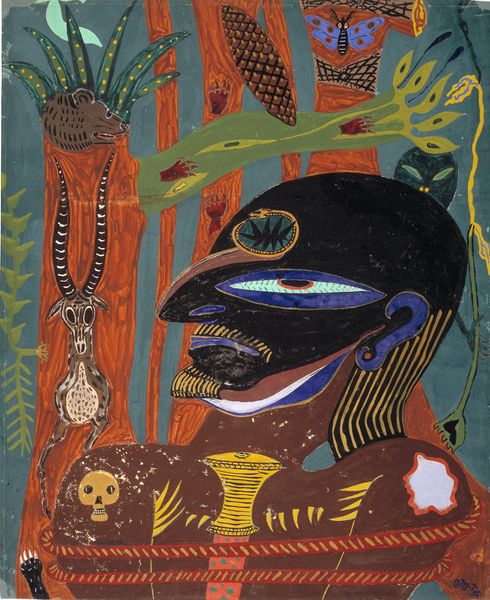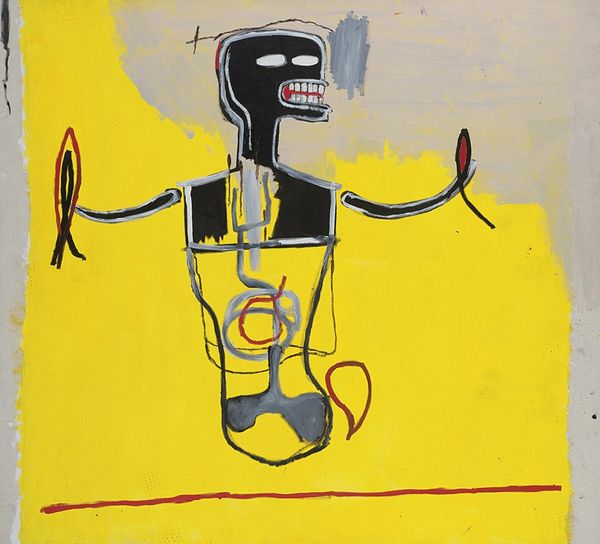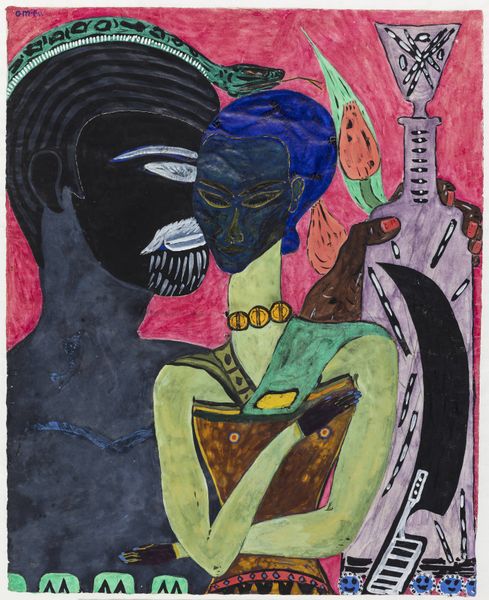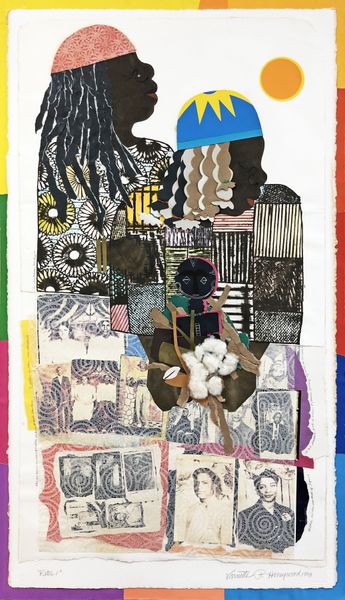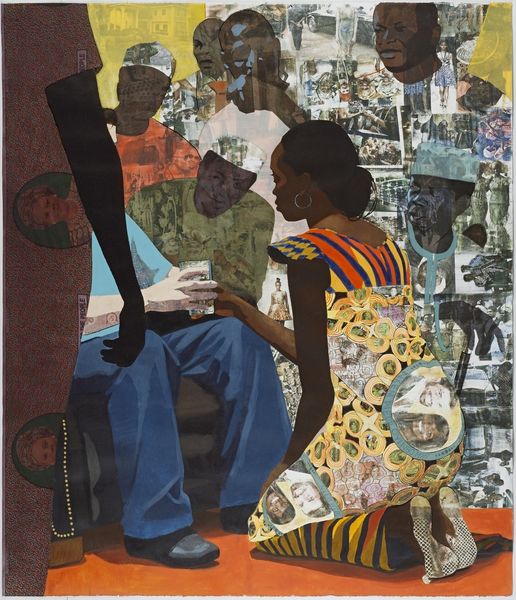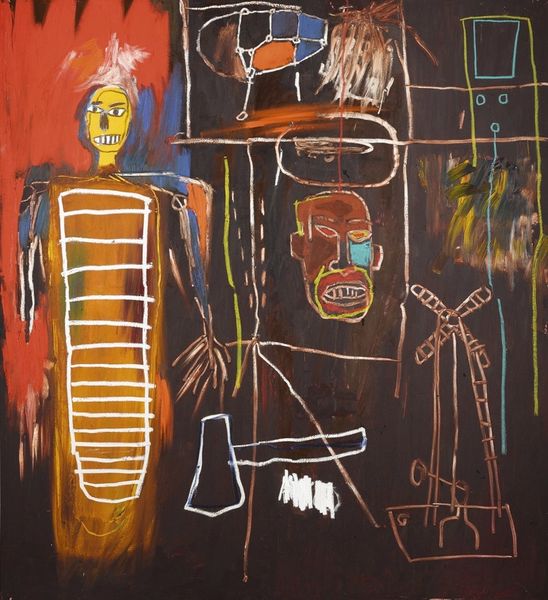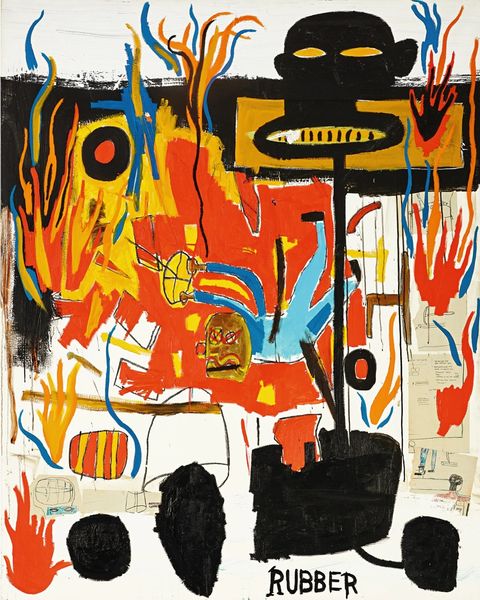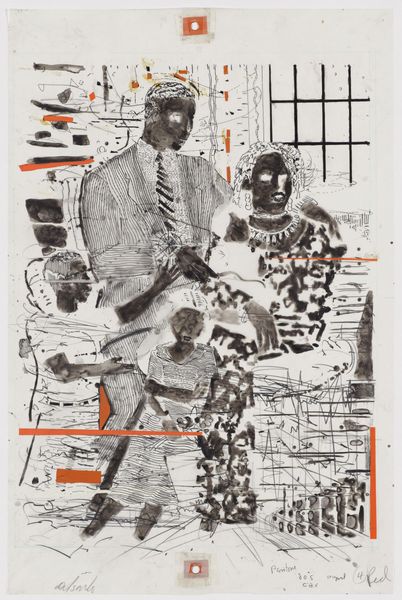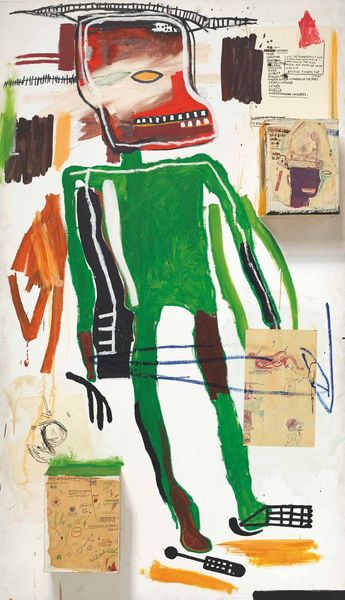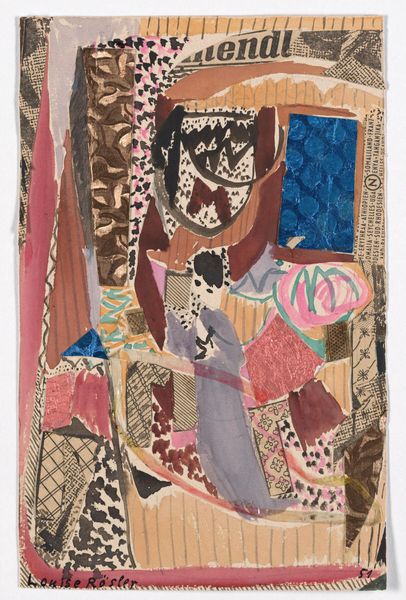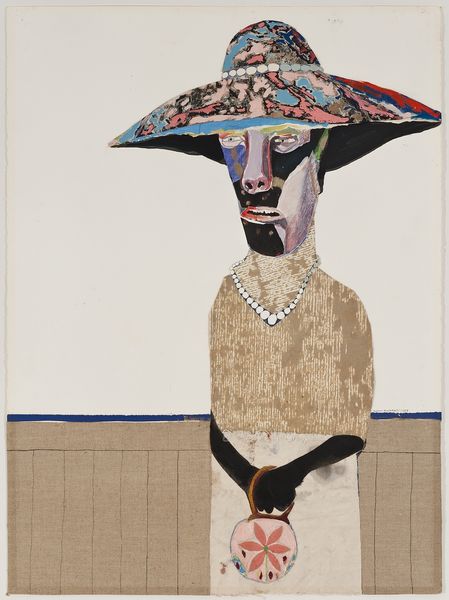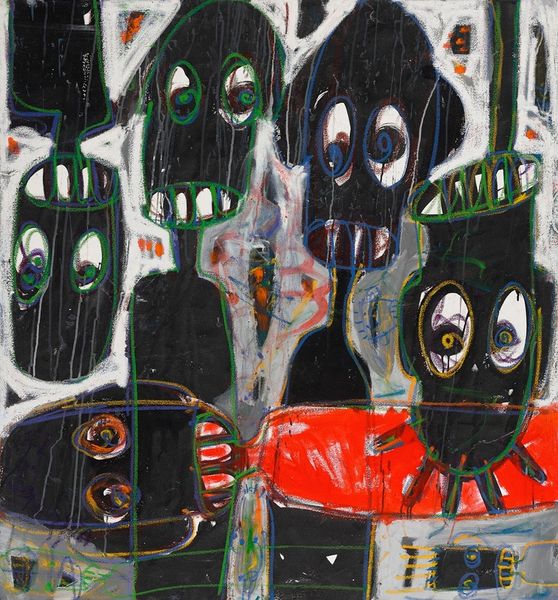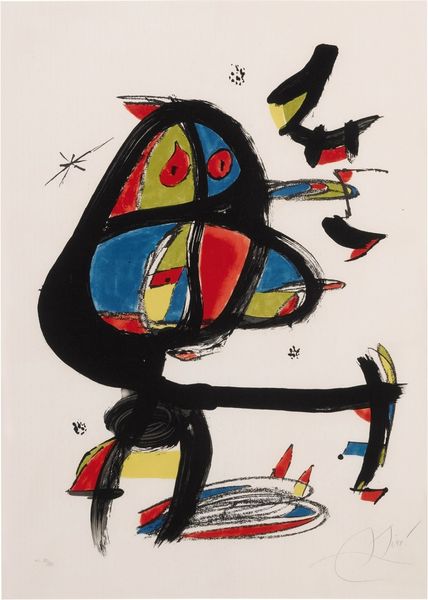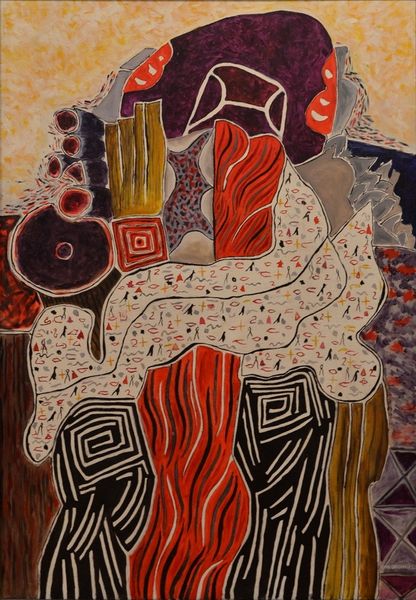
Copyright: Modern Artists: Artvee
Editor: This is "Thin in the old," a mixed-media work by Jean-Michel Basquiat, created in 1986. There's so much happening; it feels like a collage of disjointed images and symbols. What do you see in this piece, and how do we even begin to unpack it all? Curator: Well, consider Basquiat's position as a Black artist navigating a predominantly white art world. "Thin in the old", through its chaotic composition, embodies a critical response to established art historical narratives and societal structures. The anatomical drawings juxtaposed with seemingly random symbols could be interpreted as a visual disruption of conventional representation. Where do you think appropriation plays into Basquiat's social critique? Editor: That's interesting. The inclusion of anatomical drawings, alongside elements reminiscent of graffiti art, does create a stark contrast. Could it be a commentary on the body, particularly the Black body, as both a site of vulnerability and artistic exploration, maybe as a sort of power grab or commentary on power? Curator: Precisely! The skeletal figures, almost mimicking tribal art alongside printed information suggests an investigation into the commodification of culture. Basquiat’s work, placed within gallery settings, provokes the establishment; challenging notions of authorship and ownership. The chaotic elements he combines serve as symbols and act as social critiques when the art goes public. How do you see the scale impacting this dialogue? Editor: Given the scale, the impact is heightened, nearly unavoidable, demanding our attention and challenging us to confront uncomfortable realities about representation and societal norms. Looking at "Thin in the old," I am rethinking how a single artwork engages these broad conversations, about what role graffiti and street art actually had and how that affects institutional perspectives. Curator: Exactly. Thinking of graffiti as resistance that found its way onto gallery walls expands our understanding. Now do you interpret the public’s experience within museums and gallery settings differently?
Comments
No comments
Be the first to comment and join the conversation on the ultimate creative platform.
